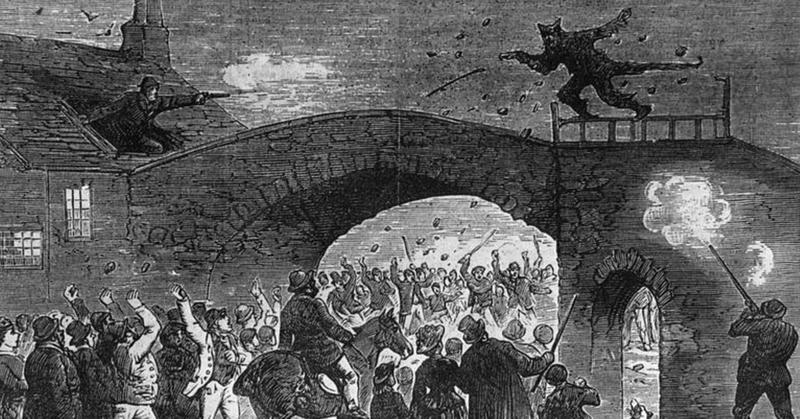Spring-Heeled Jack: The Jumping Fiend Who Terrorized Victorian England
By | May 25, 2021

A mythical figure, larger than life, able to leap tall buildings in a single bound. No, it's not Superman but Spring-Heeled Jack, a menacing scoundrel of Victorian London who terrorized his victims before jumping away over stone walls and fences of impressive height. Was Spring-Heeled Jack a product of overactive imaginations? Or was there something more to the urban legend?
Victorians Loved The Supernatural
Ghost stories and tales of the supernatural were wildly popular in Victorian times. Literature like A Christmas Carol, The Body Snatcher, and The Turn Of The Screw flourished, and seances were as common as Tupperware parties. There's a number of explanations for Victorian England's obsession with death and the afterlife, including the changing economic climate and fear of the burgeoning industrial revolution, but basically, the culture was ripe for a homegrown boogeyman.

Jack Attacks
October 1837 marked the first reported sighting of Spring-Heeled Jack, by a young woman named Mary Stevens who was returning to work after visiting her parents. Stevens claimed a figure leaped out at her from a dark alleyway, grabbed her by the arm, tried to kiss her, and tore at her clothing with claws that seemed to be made of sharp metal before she alerted neighbors with her screams, at which point she said the attacker bounded over a tall fence and disappeared.
The next day, the apparent culprit jumped in front of a carriage, forcing the coachman to swerve and crash. The passengers all insisted the boogeyman escaped over a nine-foot wall after loosing a chilling, high-pitched cackle. An urban legend was born, and as everyone clamored to get their piece of the action, descriptions of Spring-Heeled Jack grew increasingly ridiculous. He was said to wear tight shiny white trousers and a black cloak or overcoat, have red glowing eyes, take the form of a bear or wolf, and shoot blue fire from his mouth.
By the next year, Jack apparently grew crafty. On February 19, 1838, Jane Alsop reported that a man came to her door, claiming to be a police officer who had just apprehended the buoyant menace and requesting a lantern to get a better look at the suspect. When Jane opened the door, however, she claimed the man threw off his cloak to reveal "a most hideous and frightful appearance" before attacking her in the same manner Mary Stevens described, but after her screams brought her sister to the door, Spring-Heeled Jack fled. Nine days later, 18-year-old Lucy Scales and her sister were walking home after spending the day with their older brother when they allegedly passed a finely dressed man in a cloak leaning against the wall. As they got closer, Scales claimed the man breathed fire at her, which blinded her and inflicted a seizure. Her sister yelled for help, but before their nearby brother could arrive, Spring-Heeled Jack did not leap away anywhere. He just disappeared down the alley. Hey, sometimes you get bored of the same-old, same-old.

What Was Spring-Heeled Jack?
Because many of the descriptions and accounts of Spring-Heeled Jack attacks seemed so far-fetched, many Londoners, including the mayor, chalked up the incidents to mass hysteria. After all, how could such a flamboyant figure evade capture for so long?
Some people, however, believe that Spring-Heeled Jack was actually the shared identity of a group of bored young aristocrats looking to scare people for the fun of it. They point out that earlier reports of Spring-Heeled Jack suggest impressive but not superhuman jumping skills; it was only later that witnesses began painting pictures of outlandish feats.
Others believe Spring-Heeled Jack was a supernatural entity, either a ghost, a demon, or even an alien. Proponents of the latter theory propose that his ability to jump such great heights developed on a planet with a different level of gravity. Whatever the case, sightings slowly dwindled down to nothing by the turn of the 20th century, when Spring-Heeled Jack either got bored of his/their antics, moved on to the afterlife, or returned to their home planet.

